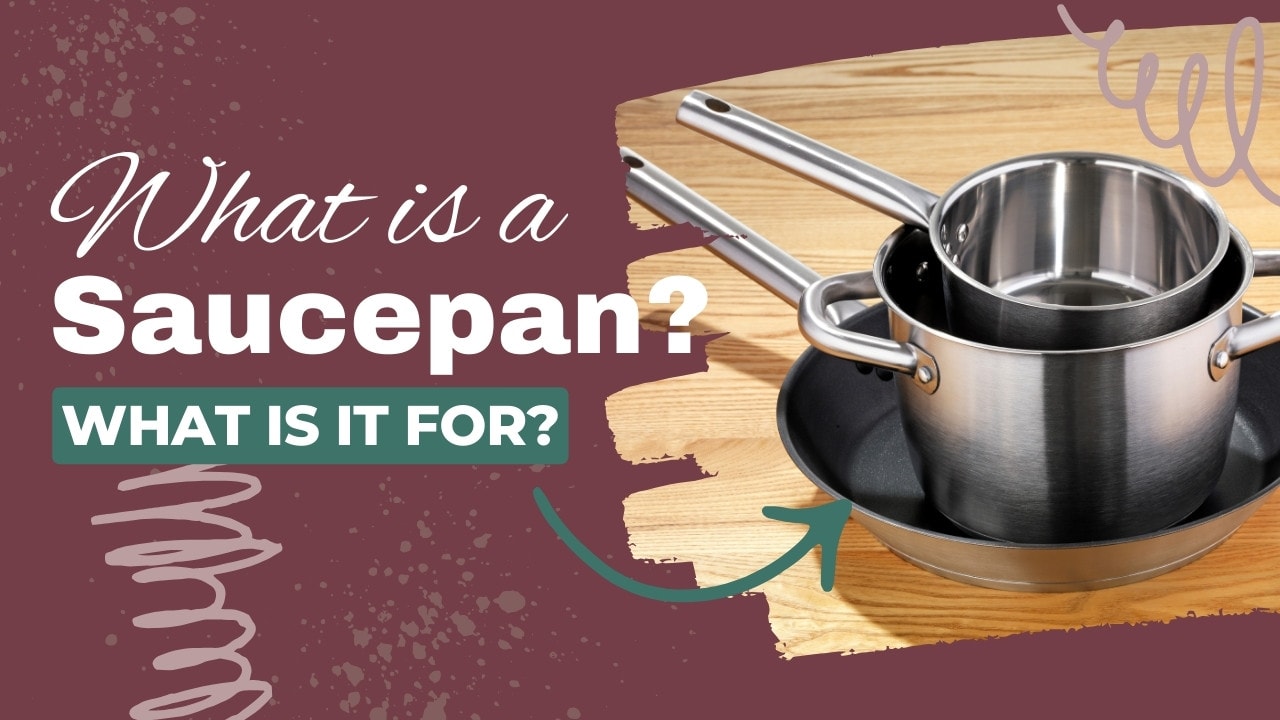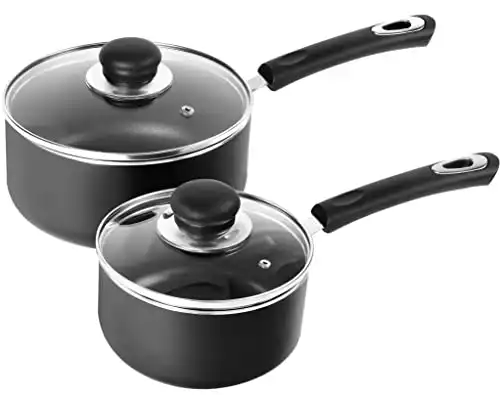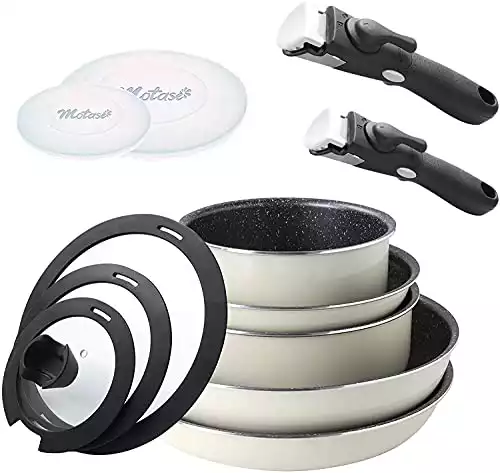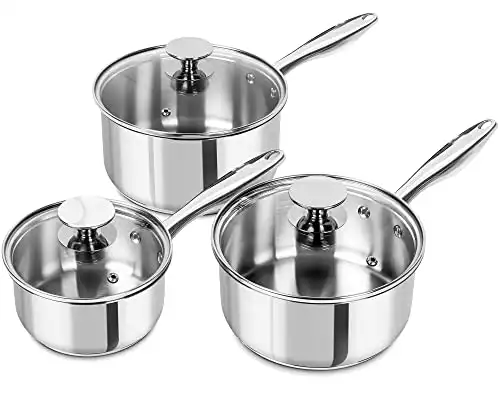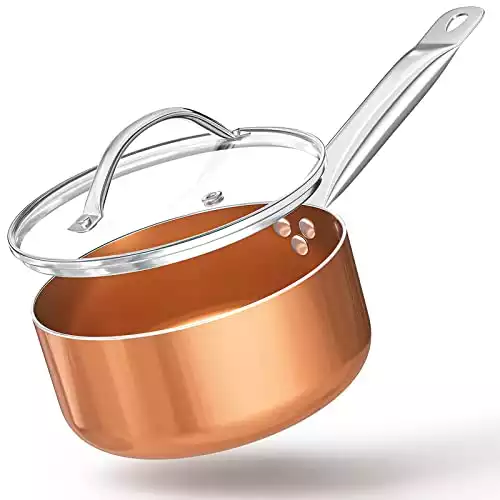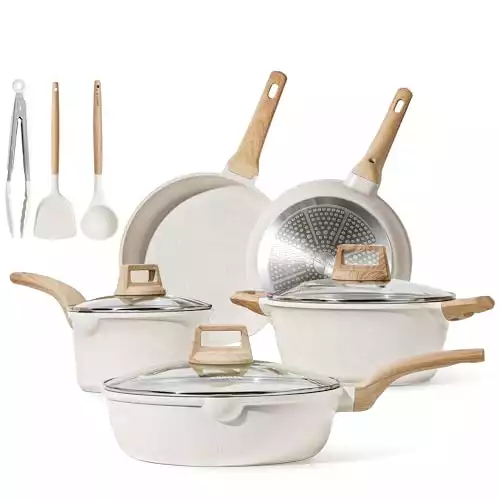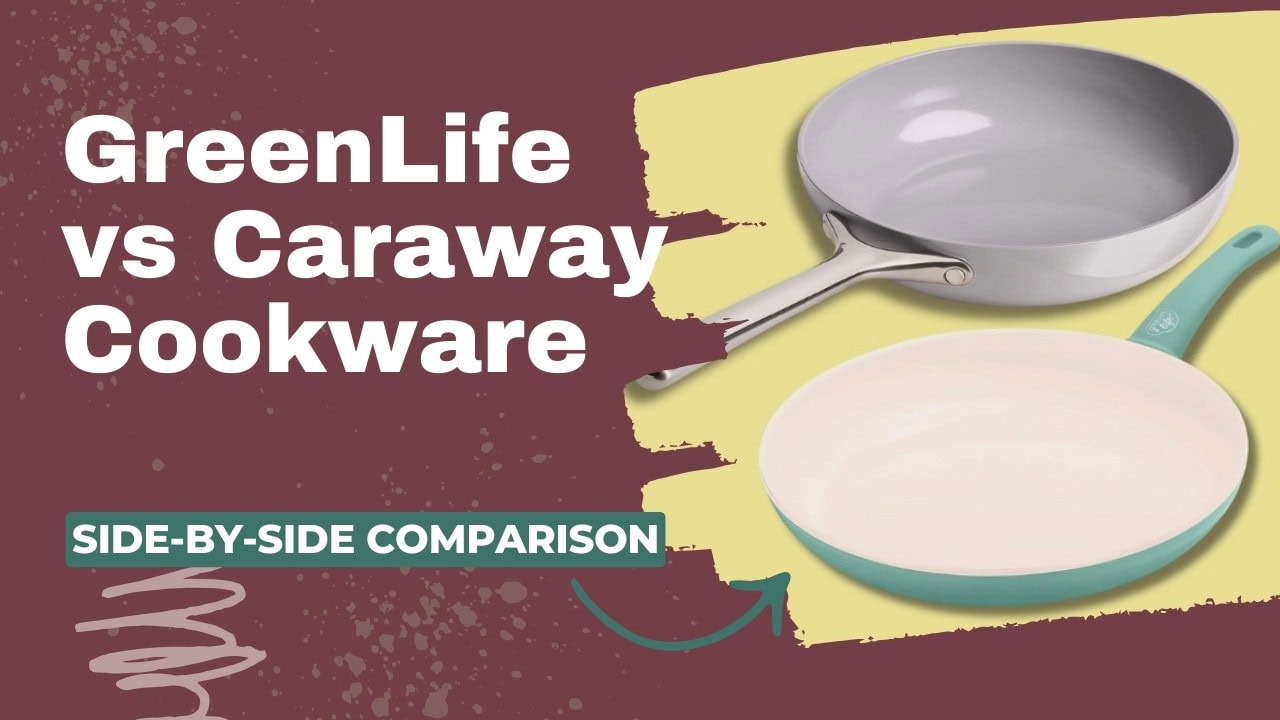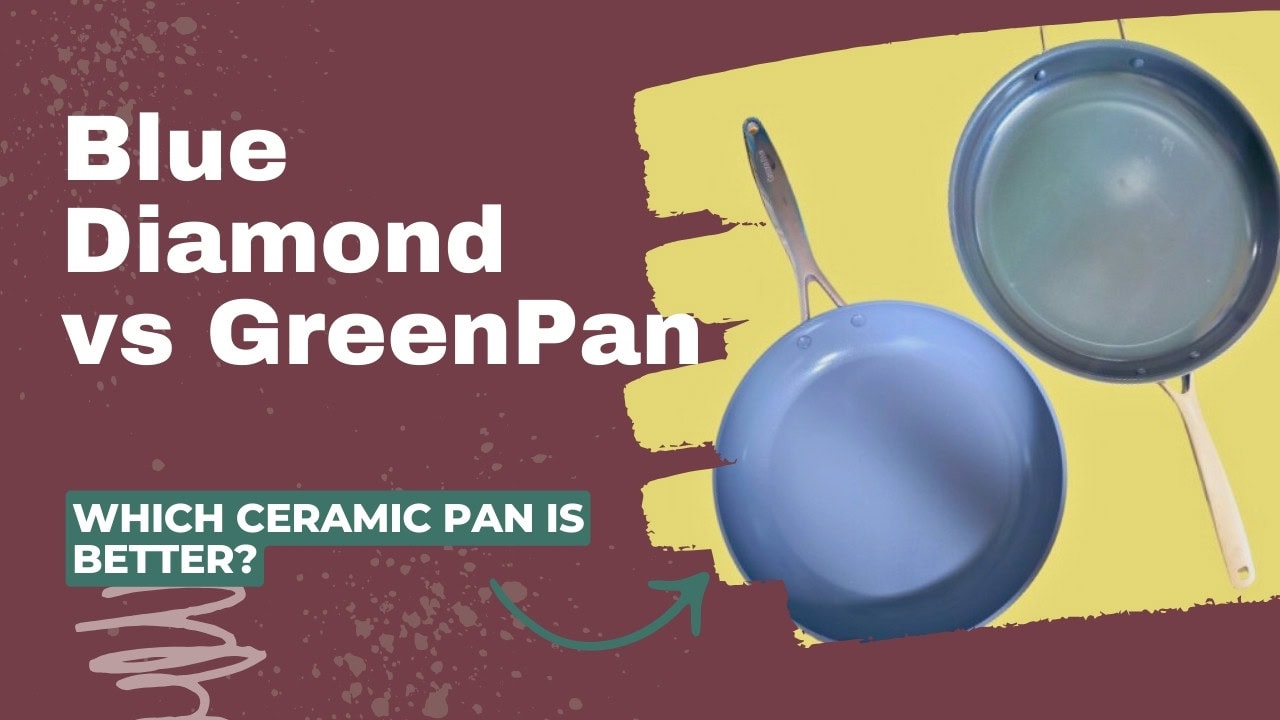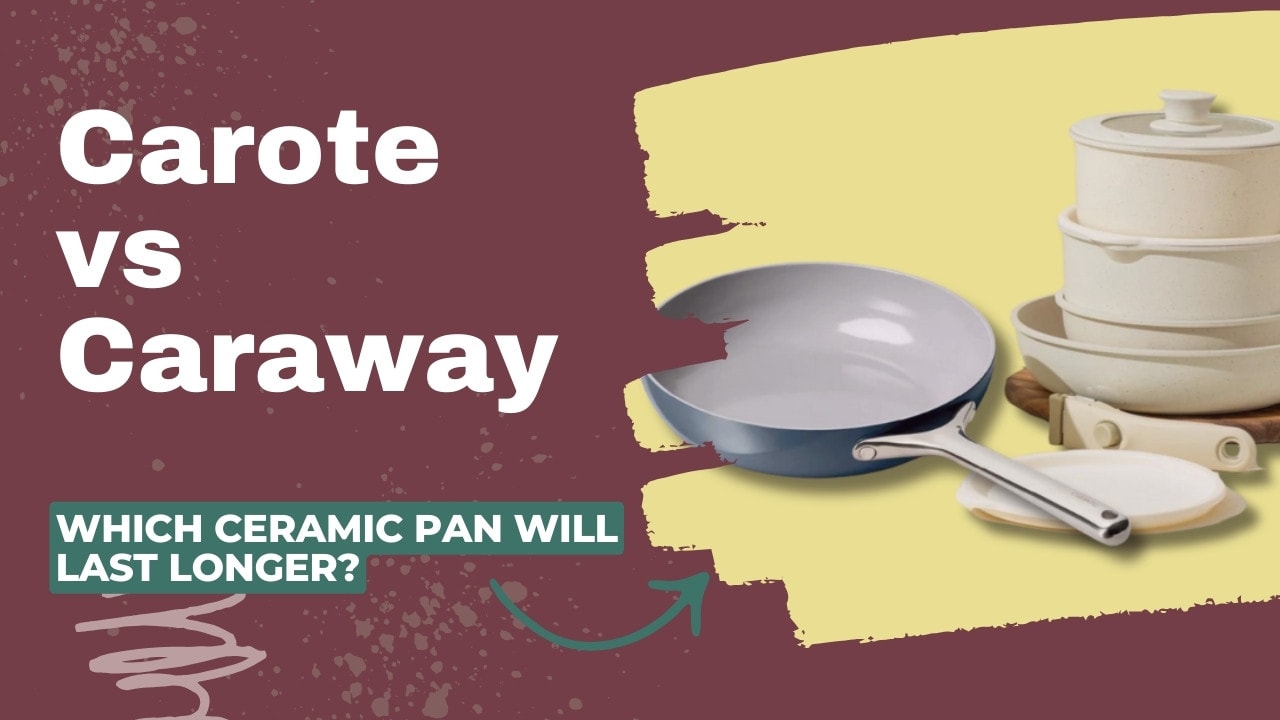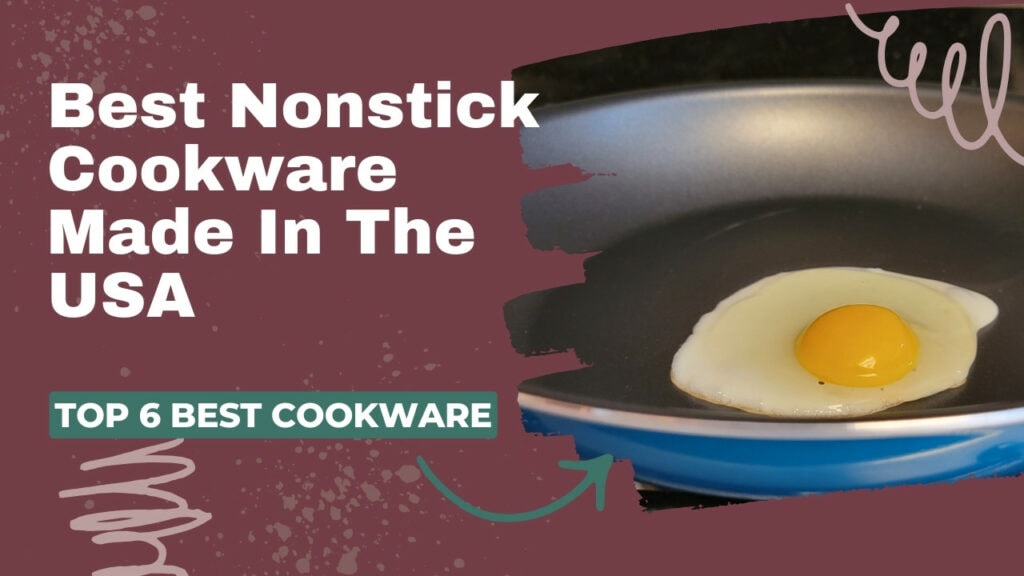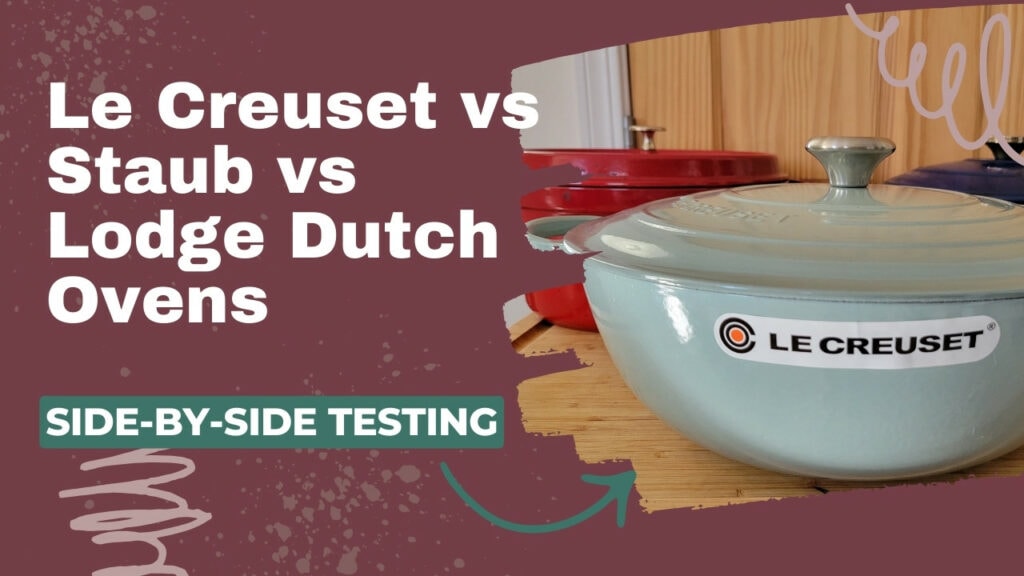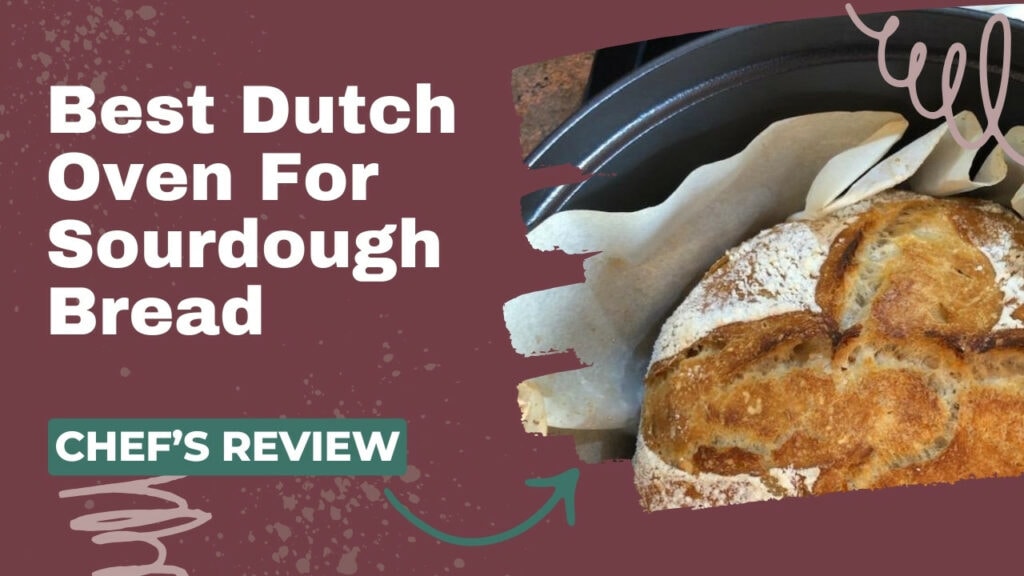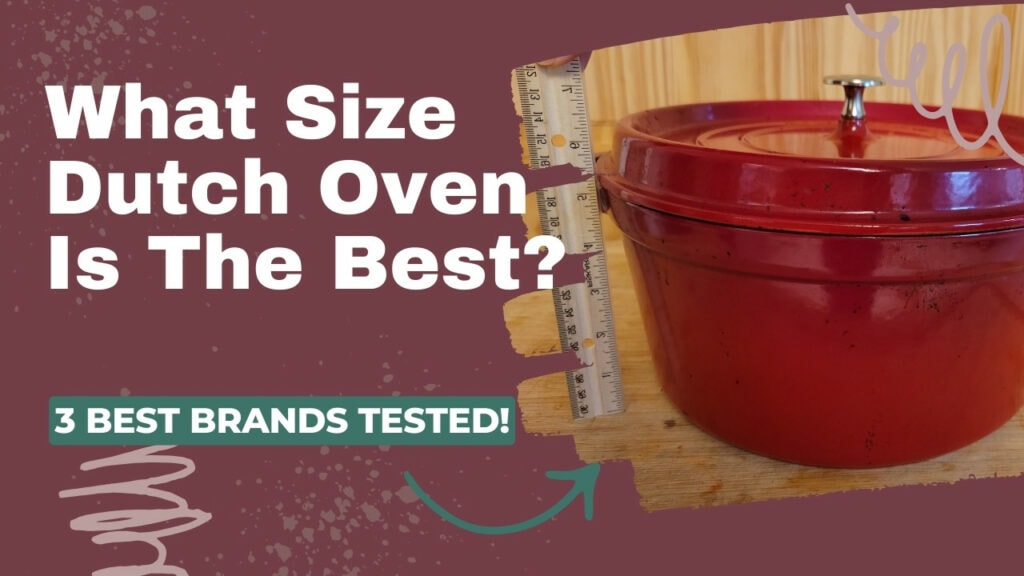One of the most versatile pieces of cookware, saucepans. Saucepans are used for cooking, simmering, reheating, steaming, and melting. They’re great for making sauces, simmering soups, or melting chocolate for your favorite triple choc brownies.
There’s a wide variety available, so to help you decide which saucepan is right for your kitchen, cooking style, and frequency of use, we’re going to cover “everything saucepan” in this guide, including:
What is a saucepan and what is it used for?
A saucepan is a round, flat-bottomed, deep piece of cookware with a long handle and tall, straight sides. It’s mostly used for cooking liquidy foods, like your favorite chili or pot of soup on a cold day. Saucepans have taller sides than a frying pan or skillet, but they are not as large as a stock pot. They also have longer handles than stock pots.
Saucepans come in a range of sizes, the most popular being 1 quart or 2 quart (4 cup or 8 cup). They are made of a variety of materials, including stainless steel and aluminum, and may have ceramic-coated or nonstick coatings. Amazon’s #1 best-selling saucepan duo is this Utopia Kitchen non-stick coated set.
✅ Bakelite handle
✅ Multi-purpose
What does a saucepan look like?
Saucepans, no matter which size or what they are made out of, are all about the same shape. They’re round with a flat bottom and high straight vertical sides with a long handle. When you purchase a set, usually every saucepan comes with its own lid. Exceptions may be a cookware set where one lid may fit a saucepan and a sauté or fry pan and can be shared between them, or a set where pans nest into each other.
Sometimes the larger-sized saucepans–3 or 3.5 quart (12 – 14 cup)–saucepans may come with a steamer basket.
✅ Nonstick granite
✅ All cooktops compatible
✅ Even heat transfer
✅ BPA free
What are saucepans made of?
Saucepans can be steel, aluminum, or copper and have various nonstick coatings, such as nonstick or ceramic. If you’re unsure which is the better nonstick option for your kitchen, budget, and cooking style, check out our guide to the best cookware material.
What sizes do saucepans come in?
Saucepans come in a variety of sizes. The most common are 1 quart (4 cup), 2 quart (8 cup), and 3 quart (12 cup). These are the sizes you will usually find in sets. This versatility means whether cooking as a single or for a family, or making large amounts for meal prep, there’s a saucepan that will cook what you need.

Once you go above 3 quart (12 cup), or 3.5 quart (14 cup) then vessels need to have higher sides and two handles to manage the weight of the liquid they can hold. These larger vessels are called pots or stock pots – a step up from a saucepan.
Why is it called a saucepan?
The first saucepans were made back in the 1680s. It was at that time named a saucepan because it was a “small metallic cooking vessel with a long handle” that was the perfect size for making sauces.
Although cookware has evolved a lot since the 17th century, the design and function of saucepans have remained essentially the same.
What is the difference between a saucepan and a pot?
A saucepan has a long handle and holds a volume of up to 12 liquid cups.
Cooking vessels that hold more than 12 liquid cups are called pots or stock pots. Stock pots have higher sides and a narrower base than “regular pots” which make them perfect for cooking large volumes of liquids that you don’t want to reduce or thicken too much. Stock pots were developed to make large amounts of stock or broth – which is mainly liquid with some vegetables, meat, or bones added for flavor.
The most common sizes of stock pots include 6 quart (24 cup), 8 quart (32 cup), 10 quart (40 cup), and 12 quart (48 cup).
| Saucepan | Stock Pot | |
|---|---|---|
| Volume | Up to 12 liquid cups | Over 12 liquid cups |
| Common Sizes | 1 qt, 2 qt, 3 qt | 6 qt, 8 qt, 12 qt |
| Handle | One long handle | Two short wide handles. |
| Materials | ✅ Stainless steel. ✅ Aluminum. ✅ PTFE nonstick coated. ✅ Copper. | ✅ Stainless steel. ✅ Aluminum. ✅ PTFE nonstick coated. ✅ Copper. ✅ Enamel cast iron. ✅ Stoneware. |
| Used For | ✅ Sauces. ✅ Gravies. ✅ Reductions. ✅ Double boiling. ✅ Melting. | ✅ Stews. ✅ Soup. ✅ Broth. ✅ Stock. ✅ Chili. |
| Top Recommendation | Cuisinart Classic Saucepan | Rachael Ray Enamel on Steel Stock Pot |
What is the difference between a saucepan and a skillet?
A skillet –also called a fry pan – is a wide pan with shallow, often angled sides that aren’t more than 2 or 3 inches tall. It’s used for pan frying or sauteing. For your flapjacks and pancakes, or those Sunday Funday big breakfasts with hashbrowns, sausages, bacon, and eggs – this is the pan you want.
Saucepans are great for making reductions, glazes, and sauces. They’re perfect for candy making, melting, and simmering. But to make that perfect three-bean chili for the big game that bubbles away on the stove for hours, a stockpot is the one for the job.
What do you cook in a saucepan?
Today saucepans are used for a wide range of cooking techniques – not just making sauces.
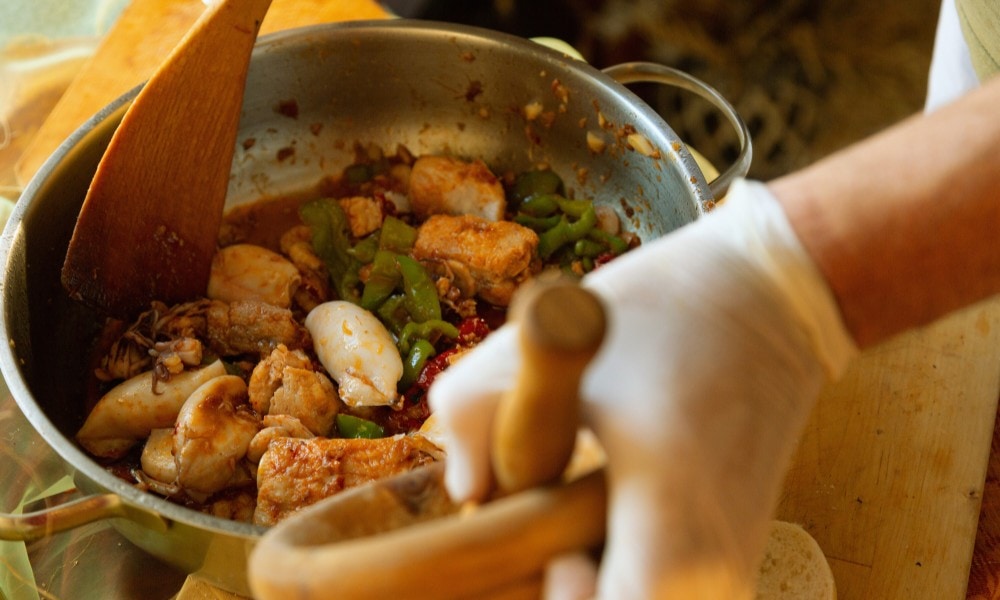
Saucepans are smaller pots, so they won’t hold enough stew for a large family. But they’re great for making smaller batches of soups and stews, cooking grains like oatmeal, boiling pastas, reheating leftovers, and making every sauce from a caramel or chocolate for sweet treats to a cheesy mornay. Yes, my fellow cheese-a-holics, saucepans are perfect for making fondue as well.
Add in a basket, and it becomes a steamer as the water gently simmers underneath to create the perfect steamy conditions for dumplings, sticky buns, meatballs, puddings, and more.
Basically, saucepan’s versatility will do everything from boiling an egg for breakfast to gently simmering a pot of chickpeas.
My Favorite Saucepans
Here are some saucepans of various materials that I recommend.
Michelangelo Stainless Steel 3 Saucepan Set
These stainless steel saucepans have impact-bonded aluminum bases, so they heat up quickly and evenly. They’re compatible with every cooktop – gas, ceramic, electric, glass, halogen, and induction. I particularly like the ergonomic handle and the fact that they are dishwasher safe.
✅ High-quality stainless steel cooking surface
✅ Heavy-duty stainless steel handles
✅ Even Heat Distribution
✅ Oven safe up to 600°F
Zunmial Copper Colored Saucepans with Lids
These saucepans are great money savers. It’s a very affordable set, considering that lids are included. They have multilayer aluminum bases that heat quickly and can work on induction cooktops to reduce energy use. Unfortunately, though, they are just copper colored nonstick – not made of real copper at all.
✅ Non – Stick Surface
✅ Easy to clean
✅ Ergonomic stay-cool handle
✅ Shatterproof tempered glass lid
Carote Nonstick Granite Cookware Set
There’s only one true saucepan in this set, but buying the set is one of the only ways you can get your hands on a saucepan with a ceramic coating. Overall, this set has a great selection of pieces that give you all you need, no matter what your cooking style. Besides the saucepan, it includes two fry pans, a sauté pan with a lid, a small 4.3 quart casserole dish with a lid, a silicone utensil to protect the granite-infused ceramic coating, and a steamer insert.
Conclusion
The saucepan is one of the most handy pieces of cookware in every kitchen. It’s perfect for boiling, simmering, melting, reducing sauces, reheating, or steaming.
If you have any questions about anything saucepan-related, we’d love to hear from you. Just leave a comment below, and –when we’re not cooking, trying recipes, or getting lost in cookbooks – we’ll get right back to you.

